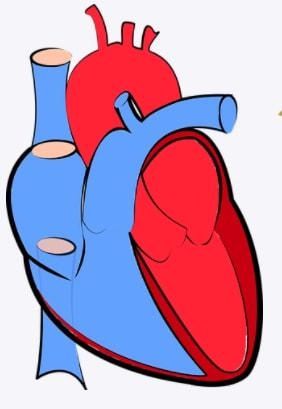is it true?
Ms. Shi’s heart rate is very slow, usually below 60 beats per minute. Once, she often mentioned this in gossip with a friend, and the friend said: “I heard that athletes’ heartbeats are slow, you are the heart of an athlete, how healthy!“Is this true?
Actually, a slow heartbeat is not necessarily good!
“bradycardia” when the heart rate is less than 60 beats per minute.
People who exercise regularly, especially people with good physical fitness such as athletes, do havephysiological bradycardia .
However, it cannot be ignored that pathological bradycardiacan lead to health problems and can even be fatal in severe cases!

1. Is it sick? Check it out!
How to judge whether bradycardia is physiological or pathological?
Generally, when the lowest heart rate is not lower than 40 beats/min, the electrocardiogram or 24-hour Holter (Holter) examination is clearly sinus rhythm, and there are usually no symptoms such as dizziness and amaurosis (that is, black eyes) , and can exclude other arrhythmia diseases, it can be considered as physiological bradycardia.
Only one of the above conditions cannot be satisfied, such as electrocardiogram showing non-sinus bradycardia (such as junctional escape beat, atrioventricular block), or symptoms that affect life (such as dizziness, dark It may indicate that bradycardia is pathological.
Special reminder: It cannot be determined by your own daily observation, and the diagnosis can only be confirmed after the hospital has completed the relevant examinations.

Second, should we treat it? Heartbeat is important!
Physiological bradycardia generally does not require treatment. Because these people usually have no symptoms that affect their life, and when they engage in physical activities (such as labor, exercise, etc.), their heart rate can rapidly increase to meet the needs of the body.
Patients with pathological bradycardia, heartbeats often cannot be normal and increase rapidly after exercise, and dizziness, amaurosis, Fatigue and other symptoms. In severe cases, syncope and insufficient organ perfusion (organ ischemia) may occur. Over time, patients may develop heart failure or even die due to cardiac arrest. These patients must be treated regularly, otherwise serious consequences may occur.
Third, how to treat? Depends on the cause!
Most pathological bradycardia is secondary to other heart diseases or the result of aging, and a small part is due to reversible factors.
If it is caused by drugs (some antihypertensive drugs, anti-premature beat drugs, etc.) program, bradycardia can be corrected.
If it is due to electrolyte disturbances, psychiatric factors (such as sleep disturbances), or other conditions that can be improved by treatment, through treatment of the primary disease, Bradycardia can be corrected.
The disease process of most pathological bradycardia is irreversible and requires life, drug or surgical intervention.
Life Interventions: Daily minimize activity and avoid strenuous activities and heavy physical labor.
However, life intervention cannot reverse the process of pathological bradycardia. Patients should be followed up regularly according to doctor’s orders, and various cardiac examinations should be improved as required, so as to detect disease progression early and conduct necessary interventions in a timely manner.
Drug therapy: It is often used for short-term treatment, such as preoperative drug adjuvant therapy. Drugs cannot fundamentally solve the problem, nor can they eliminate the risk of bradycardia, so it is not the first choice for the treatment of pathological bradycardia.
Surgical treatment:Pacemaker implantation is currently the preferred treatment for pathological bradycardia.
Remember to like and forward
Remind more people around you
Shanghai Xinhua Red Cross Dr. Yu Yichi, Department of Cardiology, Hospital
Source: Self-care